Refund Guaranteed
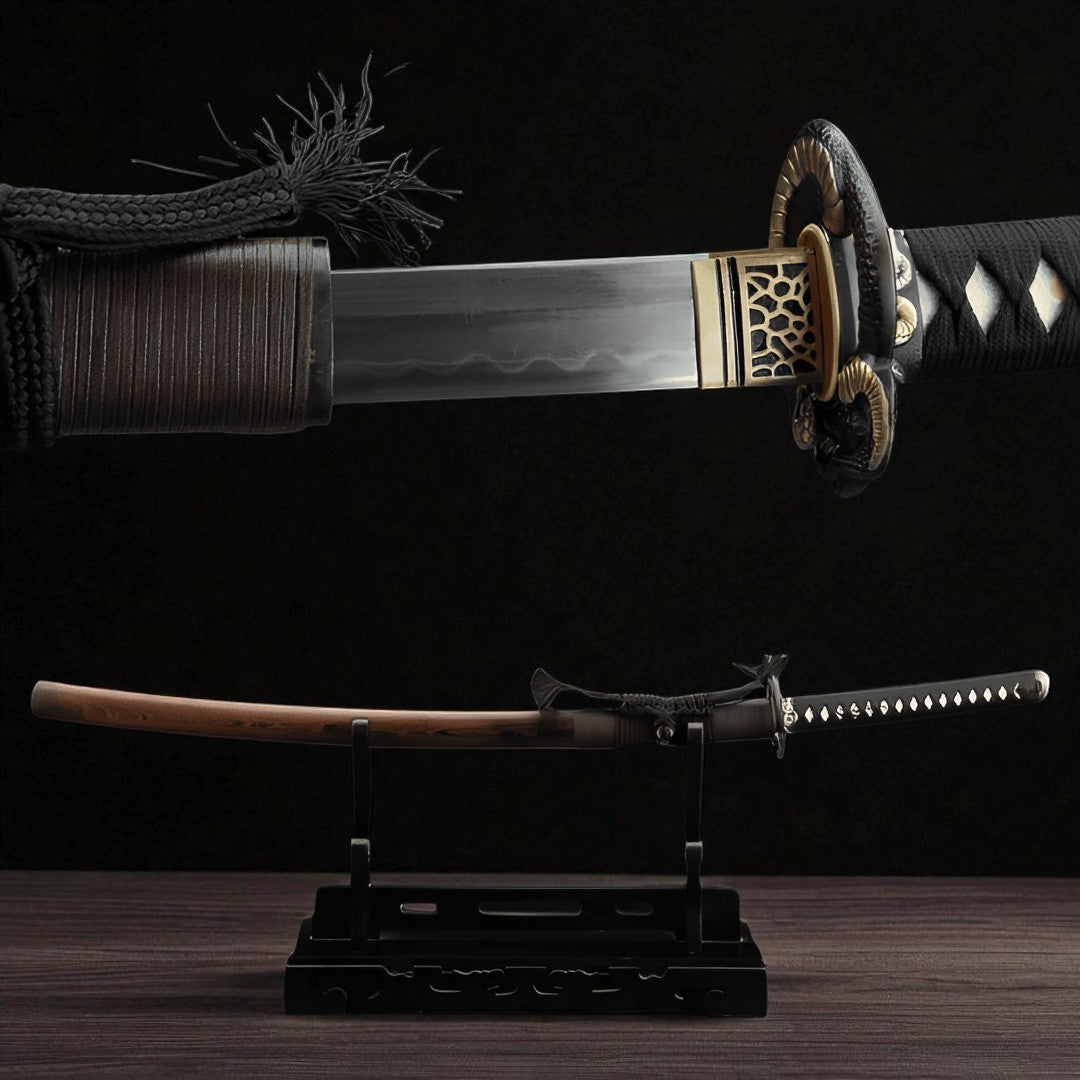
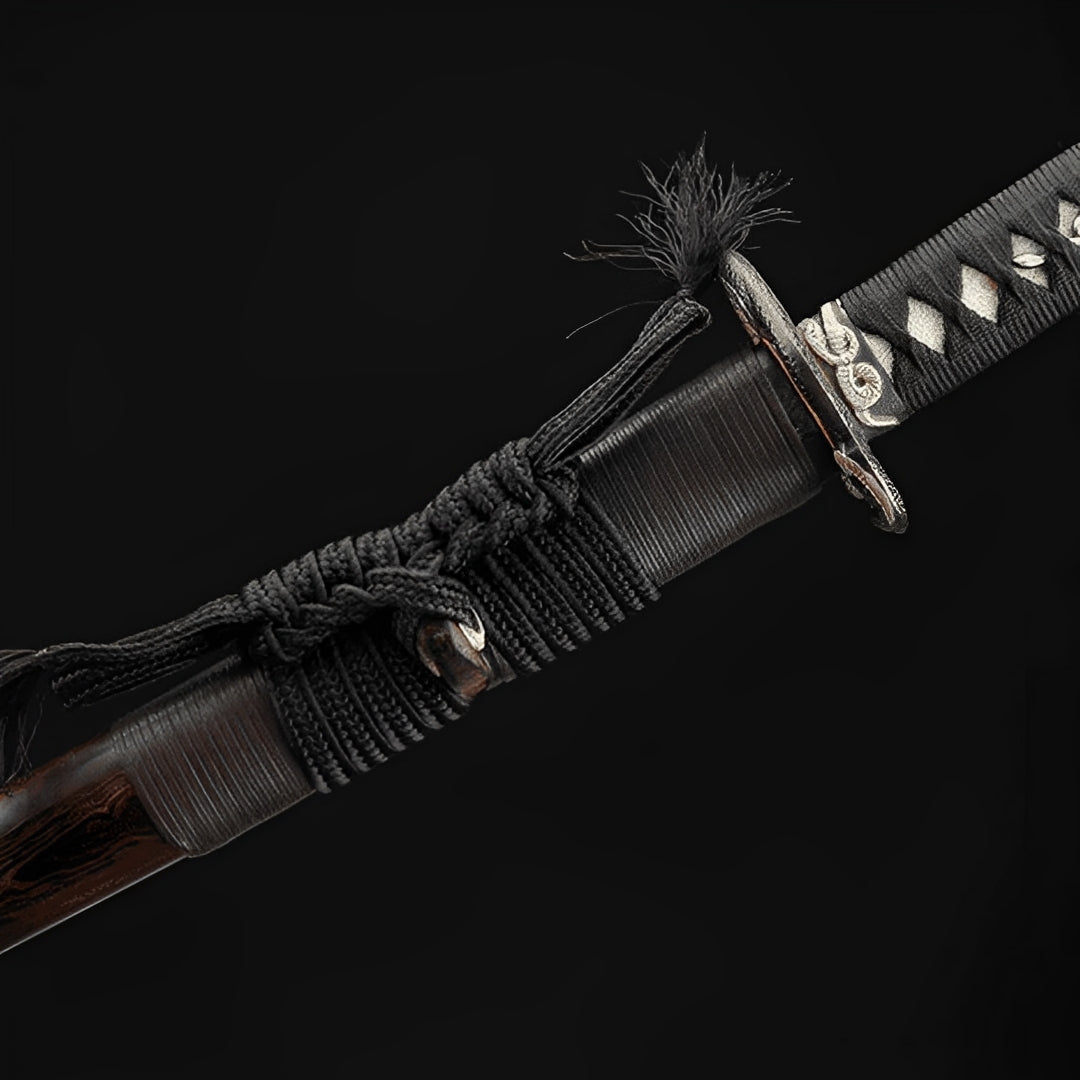
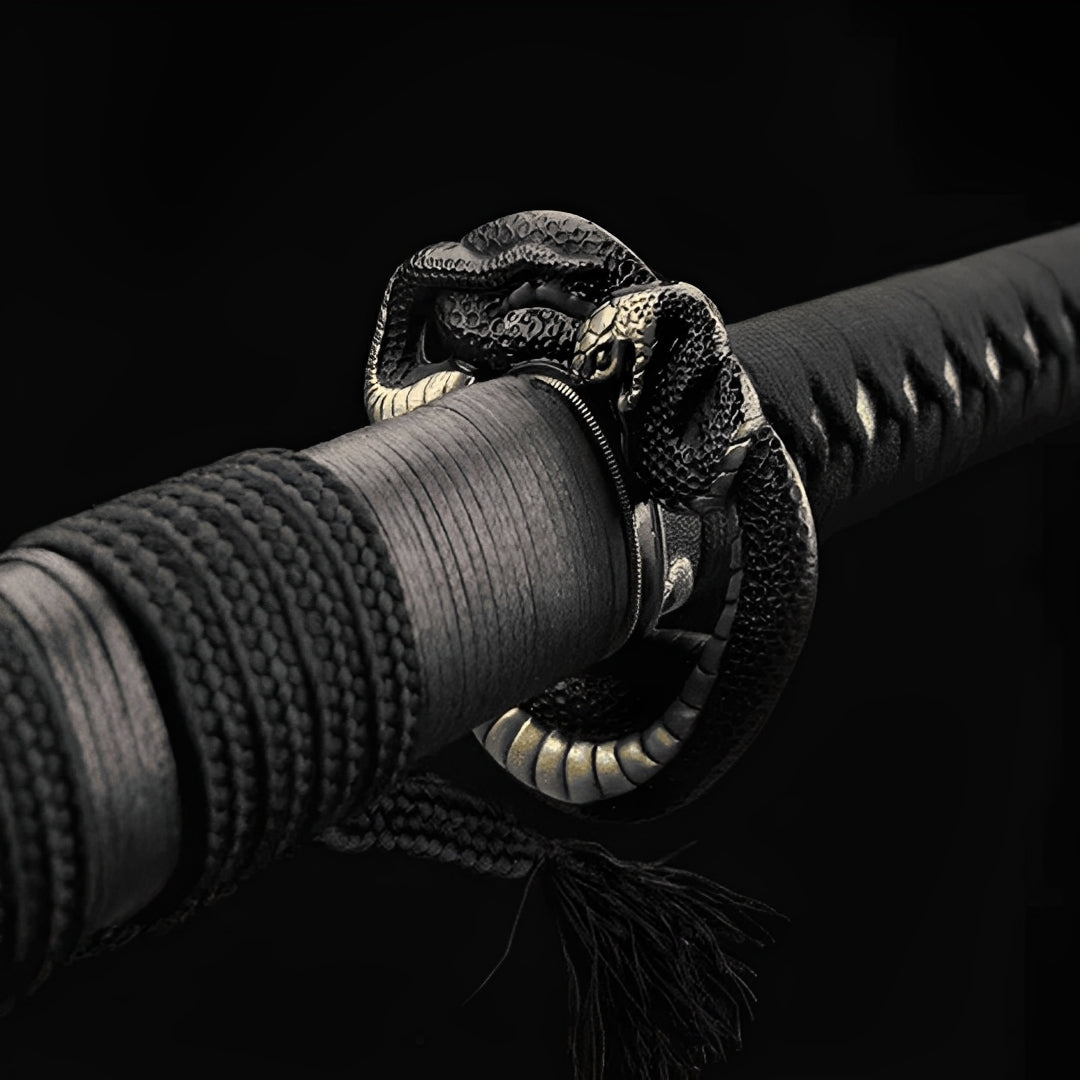
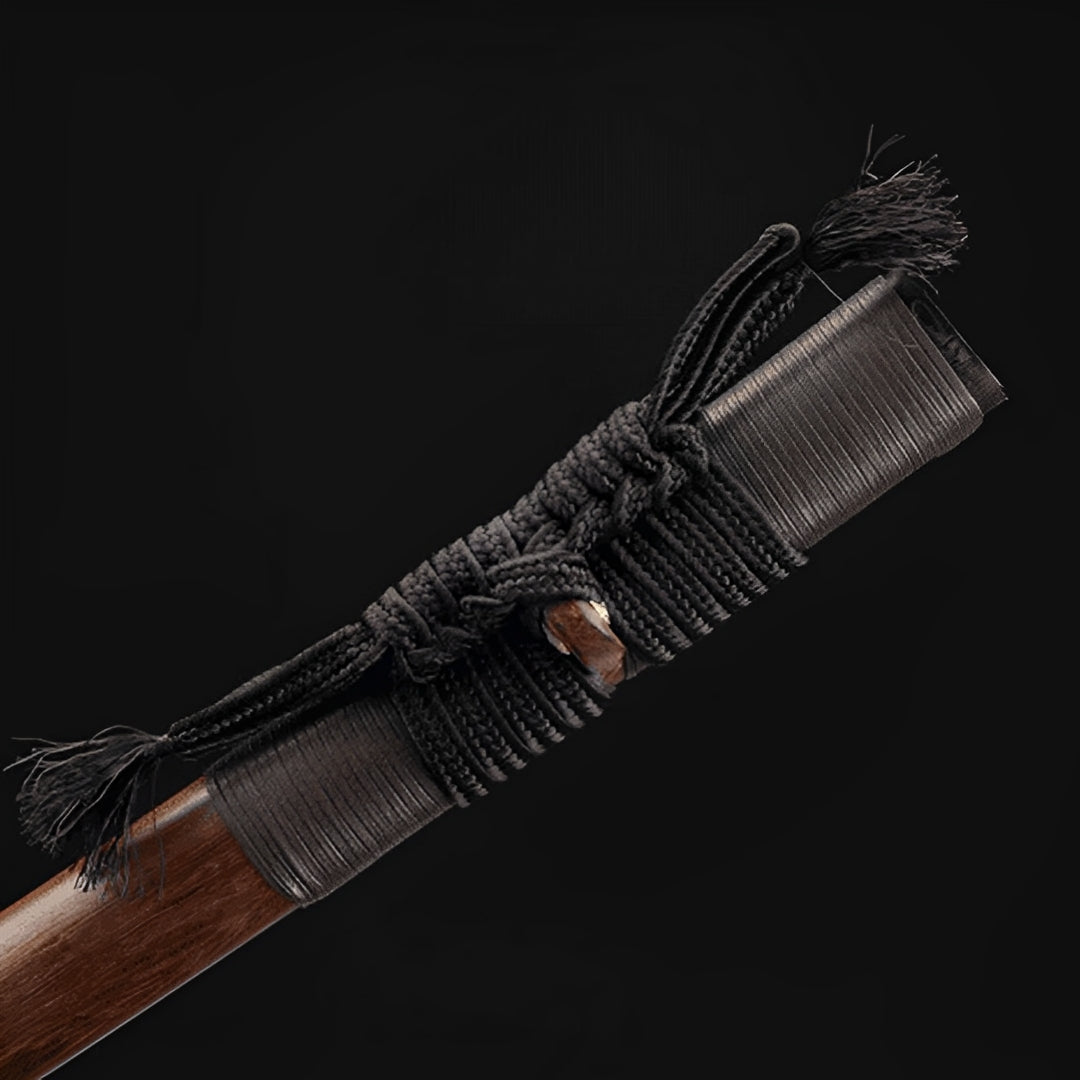
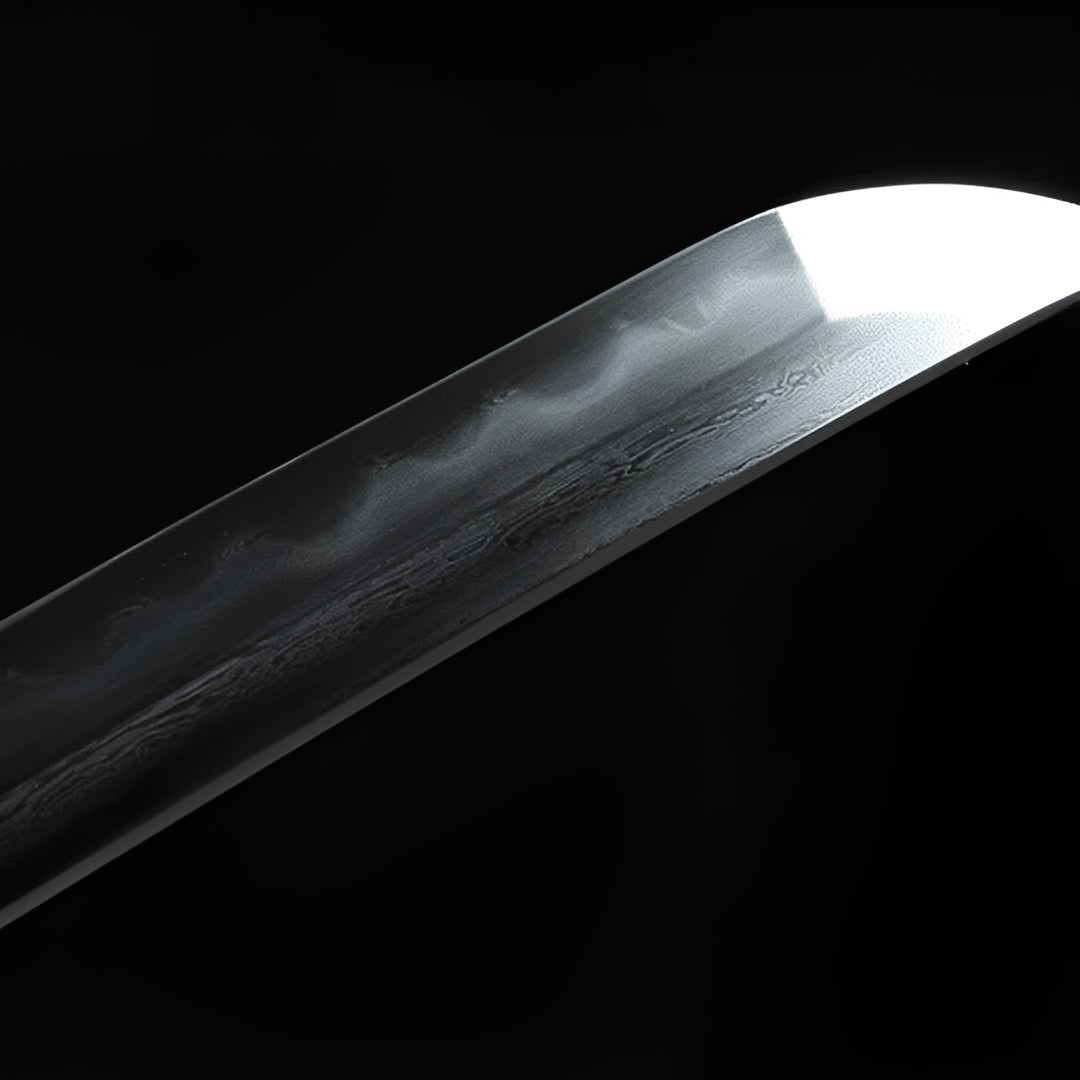
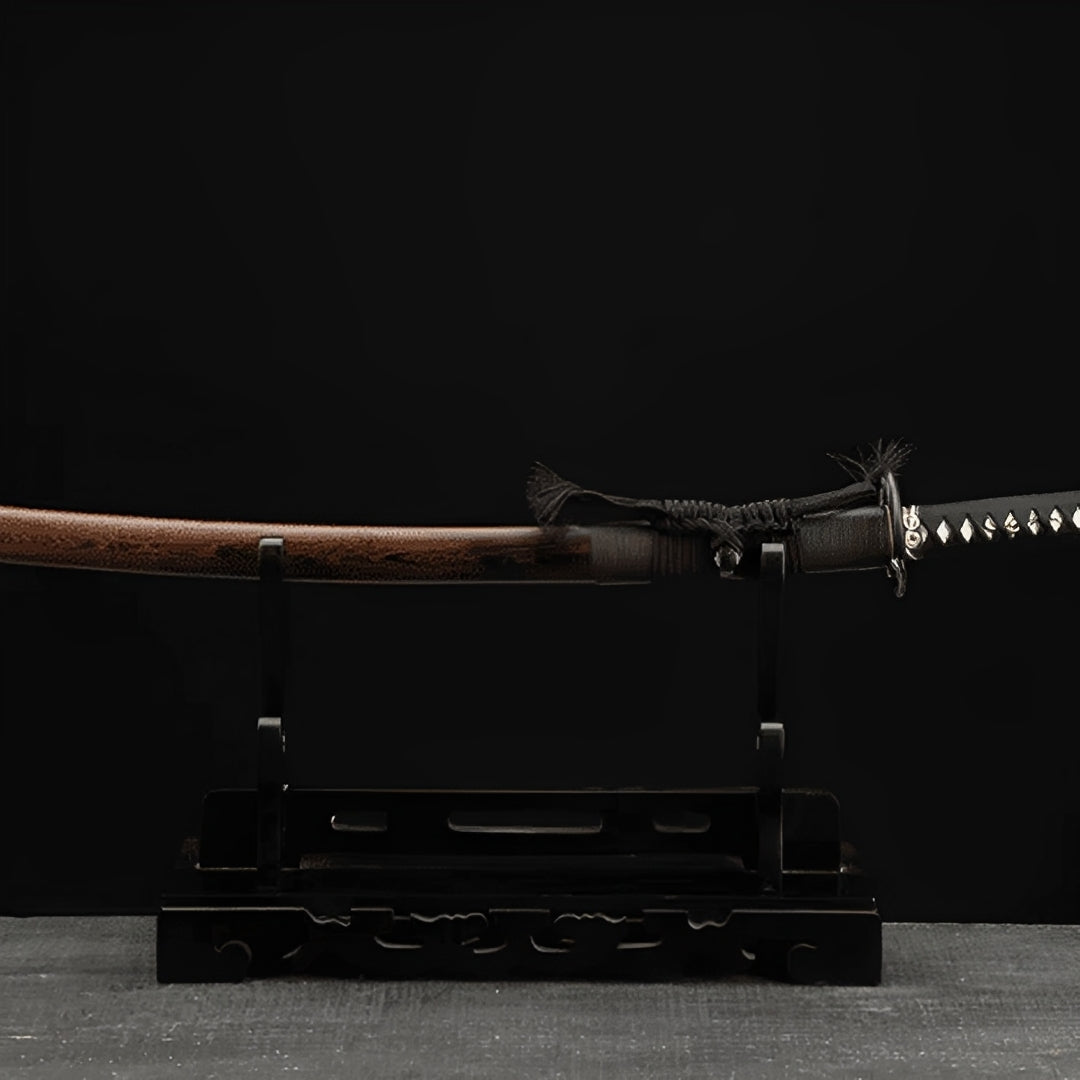
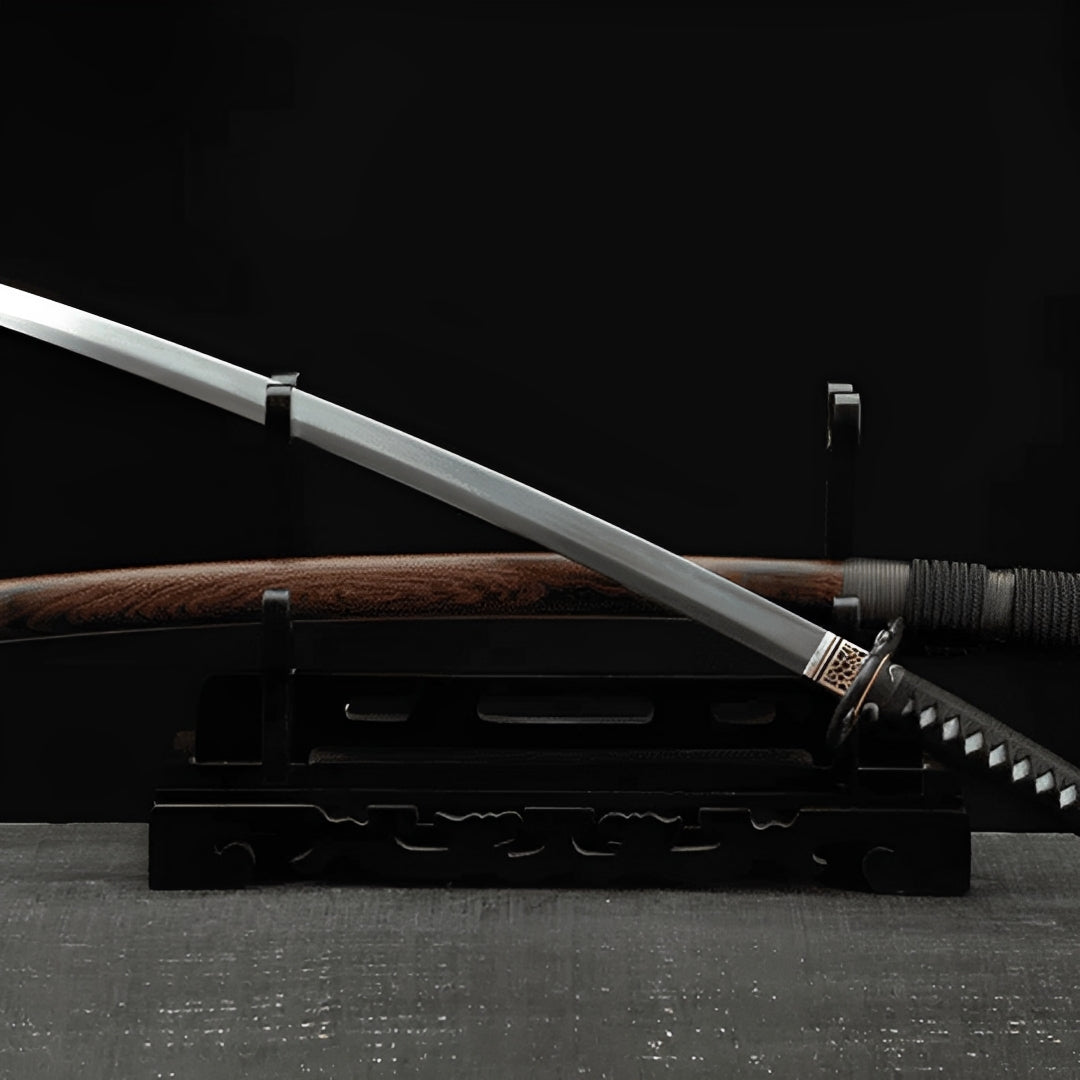
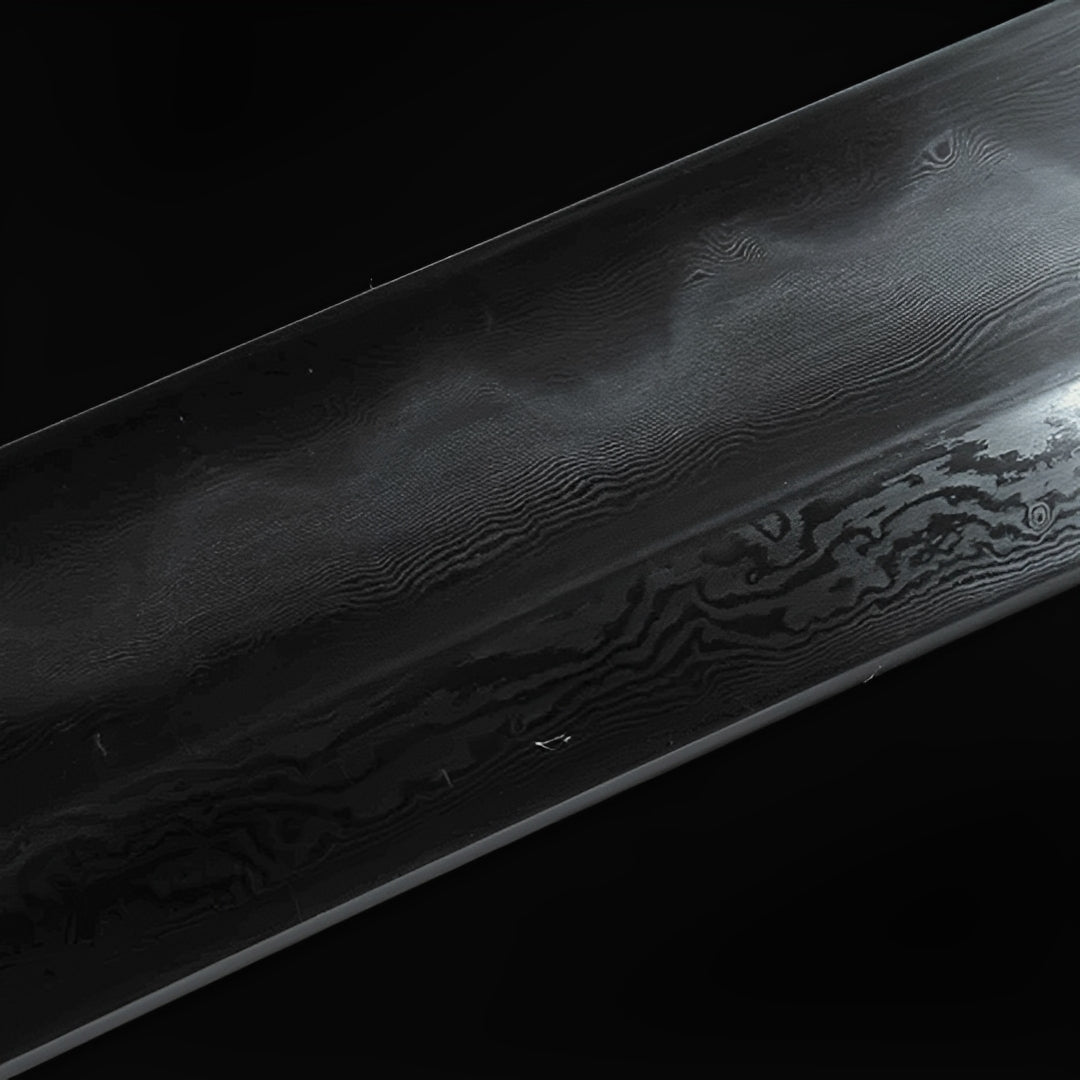
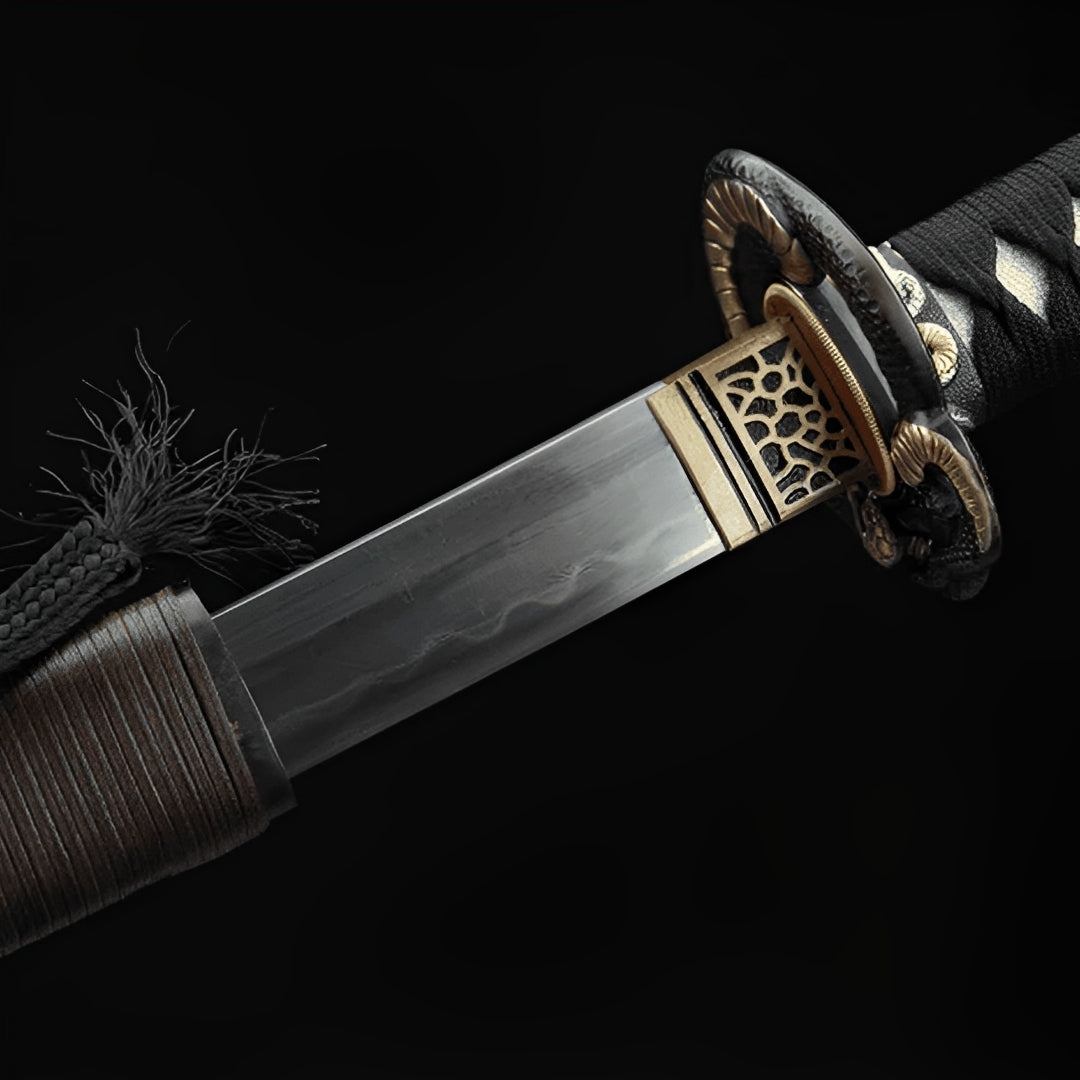
Why choose us
Damascus Steel
Forged Blade
Collector Quality
Trusted Globally
Inspired by Japan
Kuroki Katana (Damascus Steel & Genuine Hamon) - 黒木刀
Included with your order



Note: Engraving placement and orientation may vary by blade model (hamon, geometry, and flat area).
Free Shipping over $250
No Bots, No AI
Refund Guaranteed
Free Shipping over $250
No Bots, No AI
Our team is here to help with any questions or concerns.
We’re always happy to assist you — don’t hesitate to reach out.
Why choose us
Damascus Steel
Forged Blade
Collector Quality
Trusted Globally
Inspired by Japan

Kuroki Katana (Damascus Steel & Genuine Hamon) - 黒木刀
Specifications
- Full tang in handle
- SHARP
- Forged by hand
- Blade material: Damascus steel with genuine hamon
- Habaki material: Brass
- Saya in magnolia wood
- Thick black SAGEO
- Tsuba in finely carved copper
- Tsuka-ITO in genuine stingray leather
- Overall size: 105cm
- Blade size: 72cm
- Blade width: 3.2cm
- Blade thickness: 0.7cm
- Handle size: 30cm
- Includes: Katana and scabbard
Kuroki Katana - Black Wood Genuine Forge Authentication
Verify perfection with Kuroki Katana, blade where authenticity becomes obsession. This connoisseur genuine hamon masterwork refuses comfortable deception - visible temper line proving actual differential hardening not painted fakery, damascus patterns emerging from forge not printer, natural wood saya honoring tree's organic beauty not synthetic lacquer pretending, the entire piece embodying philosophy that serious collectors demand proof not promises, asking whether you'll accept vendor's assurances about "traditional methods" or insist on visible evidence that blade underwent actual forging processes distinguishing functional sword from decorative wall-hanger costing fraction but delivering nothing beyond surface appearance.
Genuine Hamon Authentication Science
The clearly visible hamon (temper line) creates this blade's most critical verification feature - not painted white line fooling casual observers but authentic crystalline structure emerging from differential hardening process, the pattern proving blade underwent legitimate heat treatment creating harder edge (58-60 HRC) and softer spine (40-45 HRC), that hardness differential delivering cutting performance and structural resilience impossible achieving through uniform hardening or fake painted hamon. This authenticated forge blade channels centuries-old Japanese differential hardening technique (yaki-ire 焼き入れ) into weapon where metallurgical science creates beauty as byproduct rather than decoration masquerading as quality.
Specifically, genuine hamon forms through controlled clay application before quenching - smith coats blade spine with thick clay layer insulating steel from rapid cooling, applies thin clay layer on cutting edge allowing rapid heat extraction during water quenching, the differential cooling rates causing edge crystallizing into hard martensite while spine retains softer pearlite, the boundary between structures creating visible hamon line through light refraction differences. That scientific mechanism means genuine hamon CAN'T be perfectly uniform or geometrically regular - natural variation proves authenticity while suspiciously perfect patterns suggest artificial creation.
Traditional Japanese sword appraisal (kantei 鑑定) specifically examines hamon as primary authentication element - experts identify smiths through characteristic hamon styles, date blades through pattern evolution, detect forgeries when hamon appearance contradicts claimed origin. That centuries-refined expertise demonstrates hamon's critical importance transcending aesthetic preference into forensic evidence of blade's creation process.
Modern sword market suffers epidemic of fake hamon - acid-etched lines mimicking appearance, painted white stripes fooling distance viewing, even sophisticated coatings replicating superficial appearance without underlying metallurgical reality. The verification essential blade therefore serves collectors who've learned painful lessons about accepting claims without confirmation, who understand that "traditional methods" claims require substantiation, who recognize that genuine quality costs more because achieving it demands actual skill not just appearance of skill.
Authentication-focused collectors specifically seek swords where construction methods prove themselves through observable features - genuine hamon showing natural variation and dimensional depth, damascus patterns continuing seamlessly across blade surfaces, natural materials revealing organic irregularities impossible for synthetic alternatives. That evidence-based collecting separates serious enthusiasts from casual buyers accepting whatever vendors claim.
Damascus-Hamon Hybrid Excellence
The combination of damascus steel construction AND genuine hamon represents extraordinary technical achievement - damascus pattern welding requires precise forge-welding of layered steels, differential hardening demands controlled clay application and quenching timing, achieving BOTH on single blade multiplies difficulty geometrically not arithmetically. This double mastery blade proves smith possesses expertise across multiple disciplines, the hybrid construction demonstrating that respecting both Middle Eastern pattern-welding tradition and Japanese differential-hardening tradition creates synthesis exceeding either technique alone.
Specifically, creating hamon on damascus blade presents unique challenges - the layered steel responds unpredictably to differential quenching because different layers contain varied carbon content and alloy compositions, the clay application must account for these variations, the quenching process risks delamination if interlayer bonding wasn't perfect, achieving clear hamon amid damascus patterning requires extraordinary control preventing one feature obscuring the other. That technical complexity explains rarity - most smiths master either damascus OR differential hardening, few achieve both competently, fewer still execute both simultaneously creating blade where neither technique compromises the other.
Traditional Japanese smiths actually employed pattern-welding through folding (creating thousands of layers through repeated folding and forge-welding) but then applied differential hardening for edge performance, the two techniques serving complementary purposes: pattern welding homogenized steel removing impurities while differential hardening optimized cutting properties. The technique synthesis sword continues that tradition of combining multiple advanced methods achieving results impossible through single technique alone.
The visual result creates fascinating composition - damascus patterns flow organically across blade surface while hamon line creates precise boundary cutting across those patterns, the interaction between techniques creating complexity rewarding sustained examination. Every viewing angle reveals different pattern interactions, light reflecting differently from various steel layers and heat-treated zones, the blade essentially performing slow reveal of its technical sophistication as viewer explores from multiple perspectives.
Kuroki Black Wood Philosophy
Kuroki (黒木 - black wood/tree) references specific philosophical concept in Japanese aesthetics - wood left natural without artificial coloring, bark remaining on lumber used for Shinto shrine construction, the deliberate choice preserving material's authentic appearance rather than imposing human preferences through processing. This natural authenticity blade channels that philosophy where greatest beauty emerges from respecting materials' inherent qualities rather than forcing them into artificial ideals, the naming itself declaring "what you see is what exists, no deception through processing attempting improved appearances."
Traditional Japanese architecture specifically celebrated kuroki lumber in sacred construction - Ise Grand Shrine rebuilt every 20 years using unprocessed lumber with bark intact, the natural materials connecting sacred space to forest origins, the aesthetic choice rejecting painted sophistication in favor of organic authenticity. That architectural-spiritual tradition translates perfectly to sword collecting: genuine materials honestly presented trump artificial enhancements pretending to be what they're not.
The philosophical depth extends beyond mere aesthetic preference into epistemological position about truth and authenticity - kuroki approach says "reality deserves respect in its natural state," that imposing human preferences through processing often degrades rather than enhances, that sophistication sometimes involves recognizing when intervention damages rather than improves. The truth-honoring weapon therefore becomes meditation on when less processing creates more value, when artificial "improvements" actually corrupt, when accepting materials as they naturally occur demonstrates wisdom rather than laziness.
Contemporary collecting increasingly values authentic materials over synthetic perfection - people recognize that perfect uniformity often signals artificial processing, that organic variation proves natural origin, that imperfections sometimes authenticate rather than diminish. The kuroki philosophy positions itself perfectly for that cultural moment when audiences tired of artificial perfection seek genuine reality even when messier than edited alternative.
Natural Wood Saya Reverence
The unfinished wood saya creates stark visual contrast against lacquered alternatives dominating sword market - where others hide wood beneath colored coatings, this blade celebrates grain patterns, growth rings, natural color variations proving organic origin. This material honesty scabbard refuses comfortable deception where synthetic materials masquerade as natural or where painting conceals inferior wood beneath beautiful surface, the transparency declaring confidence that materials require no camouflage because quality speaks for itself.
Traditional shirasaya (白鞘 - white scabbard) specifically employed unfinished magnolia wood for long-term blade storage, the natural wood absorbing moisture preventing rust while oil application preserved wood preventing drying and cracking, the functional requirements determining material choices rather than aesthetic preferences imposing impractical selections. The functional beauty saya continues that tradition where beauty emerges from perfect fitness for purpose, where form follows function so completely that distinguishing them becomes impossible.
The specific wood grain visible creates unique identity marker - no two trees produce identical grain patterns, making every natural wood saya essentially one-of-a-kind even when using identical construction methods. That inherent individuality appeals to collectors who appreciate that their piece truly is unique, that no amount of money could purchase exact duplicate, that natural variation creates value impossible manufacturing through uniform mass production.
Environmental considerations also matter increasingly - natural wood from managed forests offers renewable alternative to petroleum-based synthetic materials, the biodegradability preventing permanent waste accumulation, the sustainable sourcing enabling guilt-free collecting for environmentally conscious enthusiasts. The ecological conscience blade proves that respecting tradition and respecting environment needn't conflict but can align when both value natural materials managed responsibly.
Investment Authentication Standards
This provenance verification piece serves collectors who've matured beyond trusting vendor claims into demanding observable evidence, who understand that "genuine hamon" and "damascus steel" appear in countless product descriptions yet genuine execution remains rare, who've learned that investment-grade pieces require authentication not just assertion. The visible hamon provides that evidence - it either exists genuinely or doesn't, the crystalline structure either displays characteristic appearance or reveals itself as fake, no middle ground between authentic and artificial.
Specifically, serious collectors develop authentication skills through handling many swords, learning to distinguish genuine from fake through tactile and visual examination. Genuine hamon shows dimensional depth when viewed at angles, the crystalline structure creating subtle surface variations feeling different under fingertips, acid-etched fakes appearing perfectly uniform suggesting artificial creation. Damascus patterns should flow continuously across surfaces including tang (if visible), painted patterns stopping abruptly at boundaries where paint application changed. Natural wood shows irregular grain following tree's growth patterns, synthetic "wood-grain" patterns repeating too regularly revealing printed origin.
Traditional Japanese sword collecting specifically developed elaborate authentication protocols - examining signature authenticity, verifying hamon characteristics matching claimed smith, measuring blade dimensions against historical records, the entire field recognizing that claims require proof when substantial money changes hands. The serious collector blade participates in that tradition where authentication expertise separates connoisseurs from novices, where knowledge enables confident purchasing rather than fearful hesitation worried about purchasing expensive fakes.
Investment value specifically favors authenticated pieces over questionable alternatives - documented genuine articles maintain value across decades while fake "bargains" prove worthless when discovered, the initial premium paying for authentication proving wise investment versus gamble on suspicious deal. That economic reality drives authentication obsession among collectors who view swords as financial investments alongside aesthetic acquisitions.
The connoisseur grade weapon particularly appeals to collectors who've progressed through typical hobby stages - initial excitement buying anything attractive, painful discovery that many "deals" were fraudulent, educational phase learning authentication techniques, mature collecting phase demanding proof before purchasing. That maturation curve describes most serious collectors' trajectories, the Kuroki blade serving those reaching final stage where knowledge enables discriminating genuine quality from convincing fraud.
Care Instructions: Maintain this authenticated masterwork understanding genuine materials require specific protocols. The natural wood saya needs regular inspection for cracks indicating drying; apply appropriate wood oil quarterly maintaining moisture preventing structural failure. The genuine hamon requires protection from corrosion - after handling, wipe blade immediately removing skin oils, apply thin sword oil coat preventing oxidation. The damascus patterns benefit from gentle cleaning with soft cloth following blade length; cross-grain scrubbing can damage surface. Never attempt "improving" natural wood appearance through staining or varnishing - that violates kuroki philosophy of respecting materials' authentic state. Store in climate-controlled environment; temperature/humidity extremes stress both steel and wood causing micro-damage accumulating across years. Handle knowing this represents specific philosophical stance about authenticity and evidence, that visible hamon proves rather than claims, that natural materials honestly presented trump artificial enhancements. Display where lighting reveals hamon depth - directional lighting creates shadows emphasizing crystalline structure's dimensionality impossible seeing under flat overhead illumination. Consider this blade teaching tool about authentication: learning distinguishing genuine from fake protects against fraud while enabling appreciating true craftsmanship when encountering it. The Kuroki reminds: authenticity matters, evidence beats claims, natural materials honestly presented possess beauty artificial perfection never achieves, and serious collecting requires knowledge distinguishing reality from convincing illusion.
Hamon proves. Damascus flows. Natural wood honors. Authenticity demands no apology, requires no enhancement.
Legal Disclaimer
By purchasing from Katana Corp, you acknowledge and agree that:
- You are at least 18 years of age (or the age of majority in your jurisdiction).
- You are solely responsible for verifying and complying with all local laws and import regulations before placing an order.
- Some countries prohibit the importation of swords entirely. Katana Corp is not responsible for orders delayed, seized, or refused by customs authorities.
- All katanas and related products are sold strictly as decorative and display items. They are not intended or certified for combat use.
- Depending on the jurisdiction, swords may legally be considered bladed weapons, subject to specific restrictions or prohibitions.
- Katana Corp disclaims all liability for any injury, damage, or legal consequences resulting from misuse, abuse, or unlawful use of its products.
For full details, please refer to our Terms of Service.
Care & Maintenance
To maintain your katana's appearance and performance over time, we recommend:
- Regularly wiping the blade with a soft cloth to remove fingerprints and moisture.
- Applying a light coat of choji oil to prevent rust (for carbon steel blades).
- Storing the sword in a dry place, preferably inside its saya.
- Avoiding direct contact with hard surfaces to preserve sharpness and finish.
For more care tips, check our full maintenance guide in the FAQ section.
Behind the Blade
Every katana we offer carries the essence of centuries-old craftsmanship.
More than just a weapon, the katana symbolizes discipline, honor, and mastery.
Our artisans draw inspiration from traditional forging methods to ensure each blade reflects the spirit of the samurai — strength, precision, and soul.
Owning one is not just about aesthetics — it’s about carrying a piece of that legacy.
User Experience
This katana is designed to offer a perfect balance between blade and handle.
Its ergonomic tsuka (handle) allows a secure two-handed grip, while the weight distribution ensures smooth, fluid movement.
Whether for training, display or cutting practice, handling feels natural and precise.
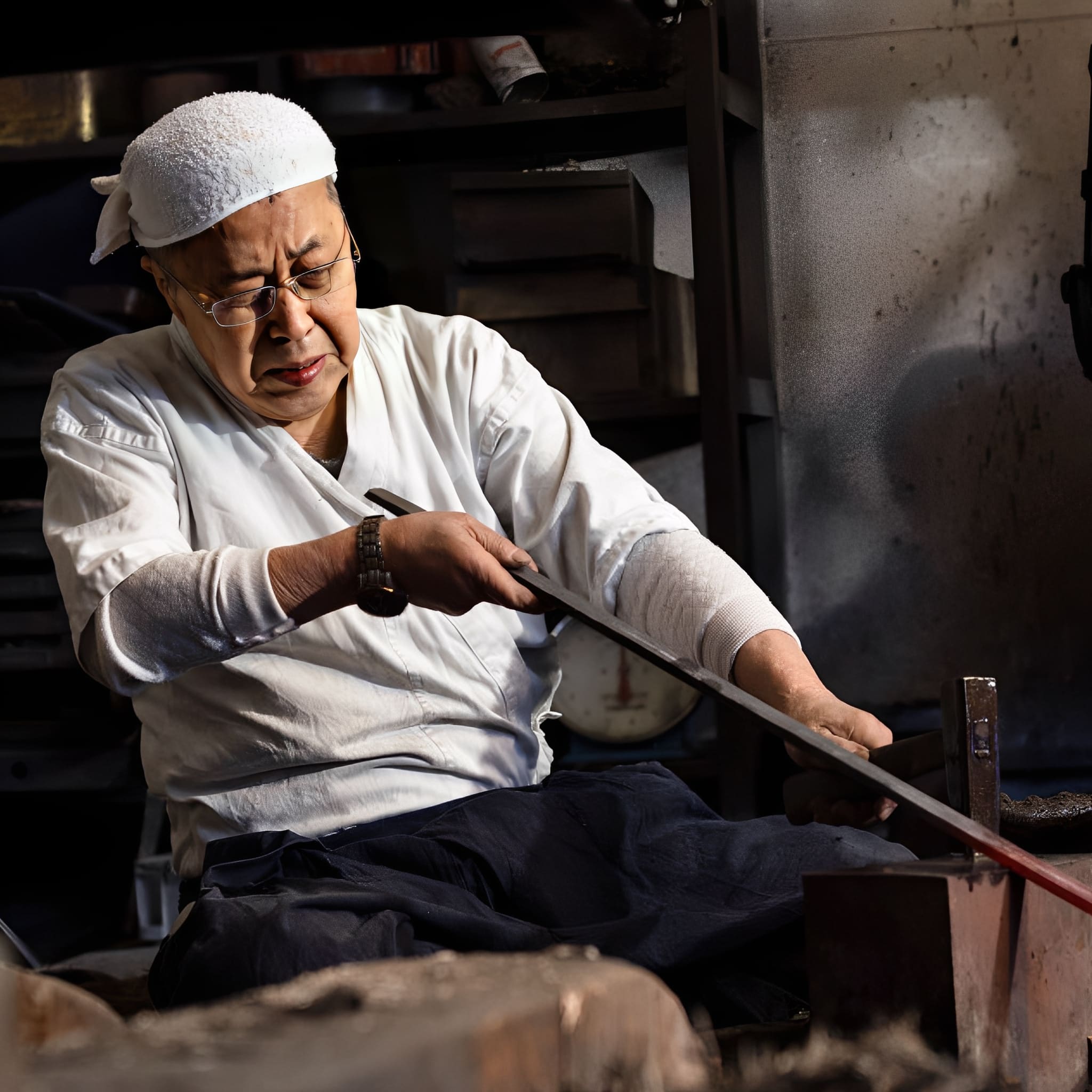
The Art of Traditional Forging
Each katana we craft is born from centuries of samurai tradition.
Our master smiths shape every blade by hand, folding the steel to achieve unmatched strength, flexibility, and beauty.
This time-honored process is not just about creating a weapon? it’s about preserving a legacy of discipline, honor, and artistry.
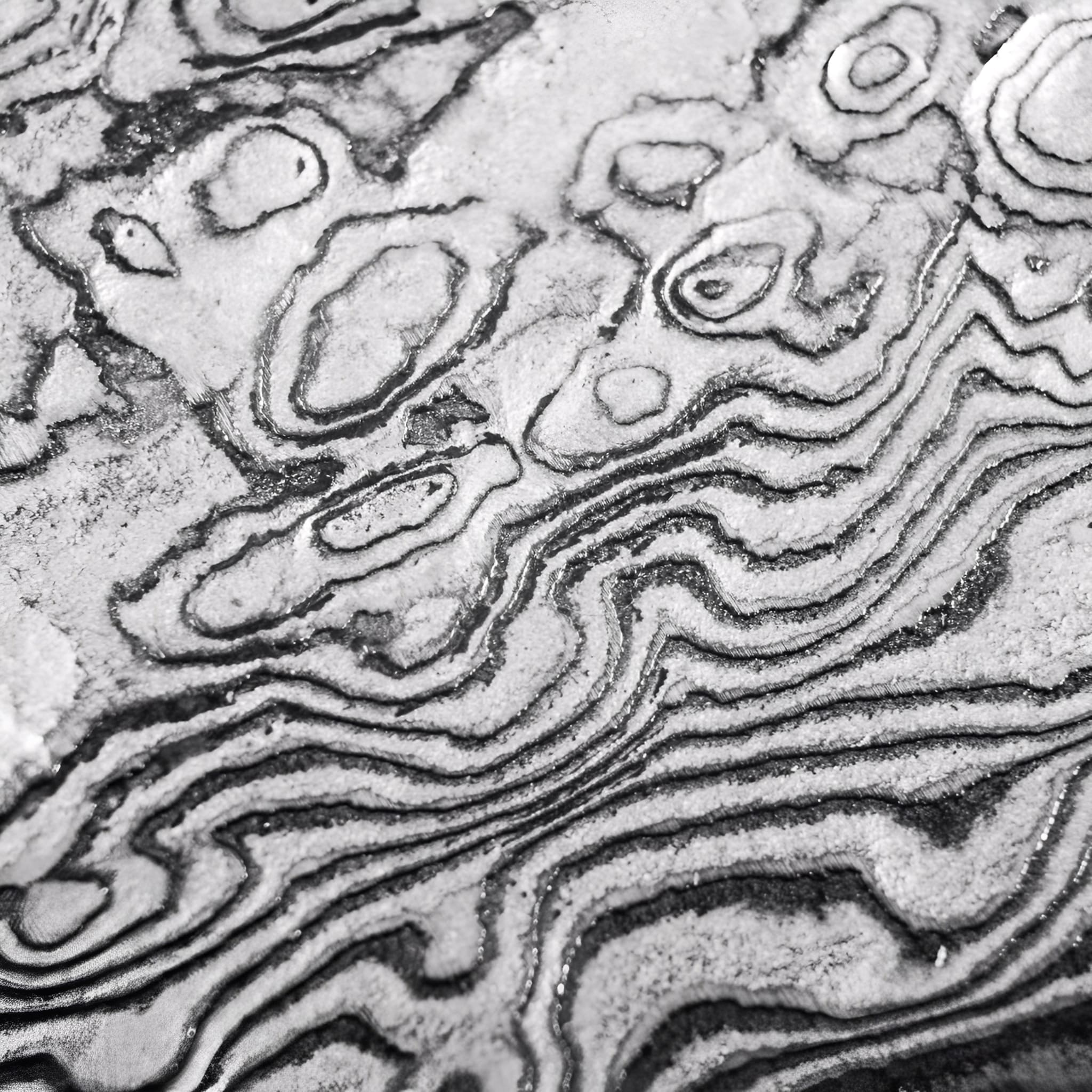
Materials Chosen Without Compromise
We select only the highest-grade steels and authentic fittings to ensure every katana is both a masterpiece and a reliable companion.
From the flawless hamon line to the perfectly balanced tang, each detail is carefully inspected to meet the highest standards of performance and aesthetics.
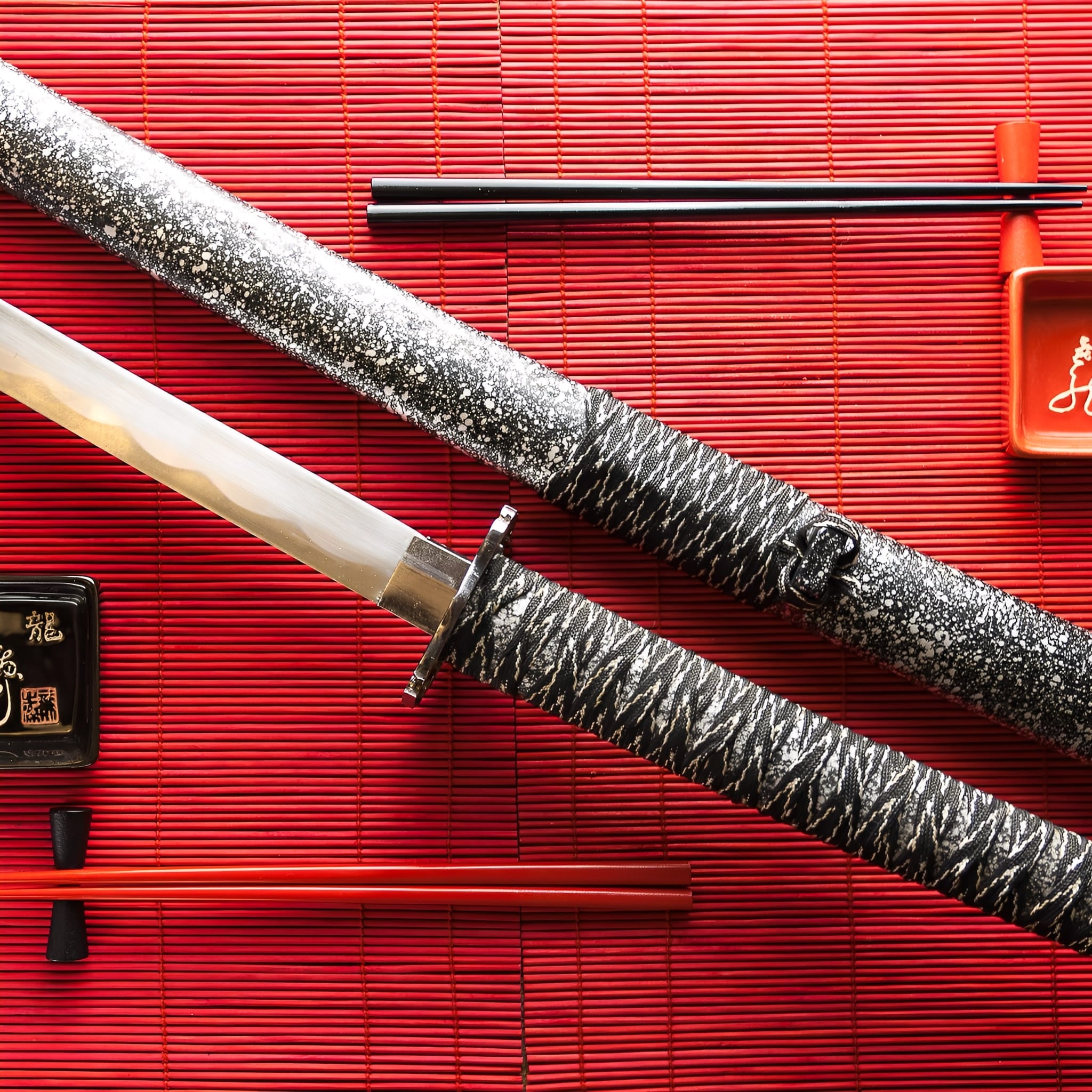
More Than a Sword, A Lifelong Legacy
Owning a handmade katana is an experience that goes beyond the blade itself. It’s holding history, tradition, and craftsmanship in your hands.
Whether displayed as a work of art or wielded with precision, your katana will stand as a symbol of timeless skill and dedication for generations to come.
-
Key Destinations
United States: 5–7 days
Canada: 5–7 days
Australia: 6–9 days
Denmark: 4–6 days
Netherlands: 3–5 days
Sweden: 4–6 days
Switzerland: 3–5 days
Finland: 5–7 days
Singapore: 6–8 days -
Central European Partners
France: 2–3 days
Germany: 3–5 days
Spain: 4–6 days
Italy: 4–6 days
Belgium: 3–5 days
Austria: 4–6 days
Ireland: 4–6 days
Poland: 4–6 days
Portugal: 4–6 days -
Extended EU Network
Czechia: 4–6 days
Hungary: 4–6 days
Slovakia: 4–6 days
Slovenia: 5–7 days
Romania: 5–7 days
Bulgaria: 5–7 days
Croatia: 5–7 days
Serbia: 5–7 days
Estonia: 5–7 days
Latvia: 5–7 days
Lithuania: 5–7 days
Luxembourg: 3–5 days
Greece: 5–8 days -
FAQ’s
Visit our FAQs page to find answers to common questions.